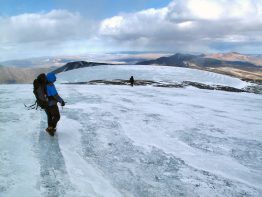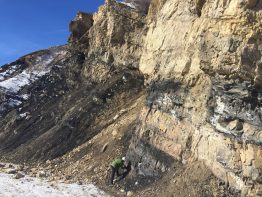The simple story says that during the last ice age, temperatures were colder and ice sheets expanded around the planet. That may hold true for most of Europe and North America, but new research from scientists in the Department of Earth and Space Sciences at the UW tells a different story in the high-altitude, desert climates of Mongolia. The recent paper in Quaternary Science Reviews is the first to date ancient glaciers in the high mountains of Mongolia’s Gobi Desert.
Read more at UW Today »A new 'atmospheric disequilibrium' could help detect life on other planets
As NASA’s James Webb Space Telescope and other new giant telescopes come online they will need novel strategies to look for evidence of life on other planets. A University of Washington study has found a simple approach to look for life that might be more promising than just looking for oxygen. The paper, published Jan. 24 in Science Advances, offers a new recipe for providing evidence that a distant planet harbors life.
Read more at UW Today »Mark Richards named as incoming UW Provost and professor of Earth and Space Sciences
The University of Washington has named Mark Richards as incoming provost and executive vice president for academic affairs. An accomplished geophysicist, Mark will hold a faculty appointment as a professor in the Department of Earth and Space Sciences, pending a vote by the UW Board of Regents. College of the Environment Dean and Mary Laird Wood Professor Lisa J. Graumlich says, “Earth scientists are trained to look for the big picture, plan for the long-term, judiciously employ data to support inference, and be nimble when intricate field research plans encounter the real world.
Read more on President Cauce's blog »Salt pond in Antarctica, among the saltiest waters on Earth, is fed from beneath
At the base of the Transantarctic Mountains lies a geological oddity. Don Juan Pond is one of the saltiest bodies of water on the planet, filled with a dense, syrupy brine rich in calcium chloride that can remain liquid to minus 50 degrees Celsius, far below the freezing point of water. But the source of water and salt to this unusual pond remains a mystery — even as hints emerge that water in a similar form could exist on Mars.
Read more »Less life: Limited phosphorus recycling suppressed early Earth’s biosphere
The amount of biomass — life — in Earth’s ancient oceans may have been limited due to low recycling of the key nutrient phosphorus, according to new research by the University of Washington and the University of St. Andrews in Scotland. The research, published online Nov. 22 in the journal Science Advances, also comments on the role of volcanism in supporting Earth’s early biosphere — and may even apply to the search for life on other worlds.
Read more at UW Today »





